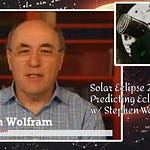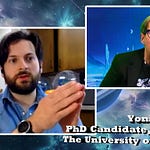In this week's episode of The Cosmic Companion, we look at how the smallest subatomic particles could be responsible for all the matter in the Universe, the icy heart of Pluto could control the climate on that world, an ancient galaxy is discovered that lived fast and died young, The CHEOPS Space Telescope takes its first image, and the Cocoon Galaxy is found to have a rare double core.
Video version of this podcast:
When matter first formed in the early Universe, theories suggest antimatter should have been created in the same, identical proportions. These two families of particles should have completely annihilated each other long ago, according to current theories. However, the Universe consists almost entirely of matter.
This may be explained if neutrinos, which only rarely interact with matter, changed just one in a billion particles of antimatter into matter, a new study suggests. This process may have produced gravitational waves which could be visible to a new generation of observatories. Finding such waves could prove this new theory, researchers suggest.
---
An artist's impression of CHEOPS in space. Image credit: ESA/ATG Media LabThe first space telescope from the European Space Agency dedicated to studying planets around other stars has returned its first image. The CHaracterising ExOPlanet Satellite, or CHEOPS, was launched on December 18th, on a mission to study exoplanets discovered by other telescopes. This first image was created to test systems on the spacecraft and on the ground, and further testing on the orbiting observatory will the carried out over the course of the next two months.
---
A giant heart-shaped feature on Pluto, named Tombaugh Regio, may play a significant role in driving climate on that world, a new study reveals. As the Heart of Pluto warms during the day, nitrogen is driven into the atmosphere. At night, this gas cools, falling back to Pluto as frozen nitrogen, in a regular cycle similar to a heartbeat, altering the climate of the dwarf planet.
---
Astronomers believe the cocoon galaxy and its smaller companion galaxy, called NGC 4485, are the products of an ancient collision between a pair of small spiral galaxies. Now, Iowa State astronomers have recognized a second galactic core within the larger galaxy. One of the cores is seen in visible light and has long been known to astronomers, while the newly-recognized second core is obscured by clouds, and is only visible in radio wavelengths.
---
An ancient galaxy recently discovered by astronomers apparently lived fast and died young. This family of stars thrived just one billion years after the Big Bang, experiencing a period of active star formation. Just 800 million years later, star production had ceased, leaving behind a dead galaxy. Researchers are uncertain why this galaxy, known as XMM-2599, died so quickly or what became of this stellar grouping after star production ceased.
---
On February 18th, I will interview Dr. Gillian Wilson of the University of California Riverside, about her work on the recent discovery of this fast-living galaxy. Make sure to listen in to Astronomy News with The Cosmic Companion right here, or on any major podcast provider.
---
Did you like this episode? Subscribe to The Cosmic Companion Newsletter! Astronomy News with The Cosmic Companion is also available as a podcast from all major podcast providers. Or, add this show to your flash briefings on Amazon Alexa.






















Astronomy News with The Cosmic Companion Podcast February 11, 2020